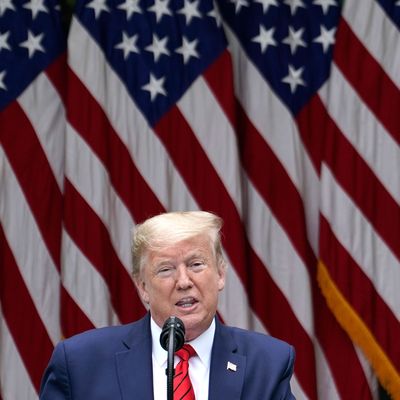
Over the past few months, Dr. Peter Hotez has positioned himself as a coronavirus vaccine realist. Hotez, dean of the National School of Tropical Medicine at Baylor College of Medicine and co-director of Texas Children’s Hospital Center’s vaccine development, has thrown cold water on claims — made mostly by bullish biotech and pharma execs — that a vaccine could be available in a few months. Dr. Anthony Fauci helped Hotez’s case when he spoke before the Senate Health Committee yesterday: “The idea of having treatments available or a vaccine to facilitate reentry of students into fall term would be something that would be a bit of a bridge too far,” Fauci said. Intelligencer spoke with Hotez about Fauci’s testimony and Sweden’s herd-immunity approach.
A recent report out of Iceland found that children under 10 were less likely to get infected than adults. In fact, researchers could not find a single case or instance of a child infecting parents. Is this study worth paying attention to?
I haven’t seen that report. It may be true. We know, for instance, that Korea kept schools open the whole time. One of the reasons we did the school closures is because we know from influenza epidemics that it’s often children who are the big community spreaders. If it’s a severe flu season, you could sometimes shut down schools.
On the other hand, we still have to resolve the fact that New York’s got 100 kids with this Kawasaki-like illness. So that’s another troublesome aspect. I think one of the things we’re learning about COVID-19 is that it’s as much a vasculitis problem as it is a pulmonary problem. I think that may be related to the tight binding of the virus to the ACE-2 receptor, and somehow that’s triggering vascular and thrombotic events.
This is a dimension to the disease that we really didn’t appreciate. In some ways it scares me more than the respiratory disease, because I think it’s probably associated with sudden death, either through pulmonary emboli or strokes — or maybe thrombi are forming in the coronary artery, causing heart injury as well.
New York City has recently reported an uptick in deaths from stress and heart attacks that are not being directly attributable to COVID-19. But could some of those heart attacks have occurred among undiagnosed COVID-19 patients?
I think there are two possibilities. My friend Jon Reiner, a cardiologist at George Washington University who’s famous for taking care of Dick Cheney, thinks a lot of people are afraid of coming into the hospital because of COVID-19. They’re not getting treated for their heart disease and everything else. But I also think what’s happening is that the thrombotic events in COVID-19 are causing death.
What do you think of Sweden’s approach, trying to achieve herd immunity in the general population?
To me it sounds a bit apocalyptic, especially after what we’ve seen in New York. This virus can cause terrible thrombotic events, stroke, and pulmonary emboli, even among younger people. I’m very troubled by just letting the population get sick. Even if it’s just letting less susceptible people get infected, people who may suffer fewer clinical consequences. That’s very hard to control, and I’m not sure it’s going to work.
The takeaway from Fauci’s testimony seemed to be his public refutation of Trump’s assertion that this would go away without a vaccine, and his tempering expectations that a vaccine would be available for schools to open this fall. Why do you think the Trump administration is confident that one can be produced so quickly?
I think I’m beginning to understand where the disconnect is. After listening to a couple of these White House coronavirus briefings, it occurred to me that both the president and the vice-president had somehow gotten the idea that this is a manufacturing problem. That the reason we don’t have the vaccines is the same reason we don’t have the ventilators, or masks, or diagnostic — we just haven’t scaled up manufacturing. They don’t realize that vaccines are not the same as ventilators or masks — the hurdle is not the manufacturing process but showing in clinical trials that you have a vaccine that’s safe and effective.
I think that also led the White House to use this very unfortunate term, “Operation Warp Speed.” I think that played right into the hands of the anti-vaccine movement. You had the president or the White House using this terrible term, and then you had the pharma companies and the biotechs buying into it, because basically [Health and Human Services] is going to pay for it. “Yeah, we’re going to have these vaccines manufactured by the fall” — without really anybody communicating the most important piece of this, which is that there is no way we’re going to accumulate enough efficacy and safety data in a phase-three trial to be able to license a vaccine by the fall.
It’s conceivable that some percentage of Americans are vaccinated and the rest are left to achieve herd immunity, right?
Yes, some combination of the two is a possibility. It depends on when the vaccine is ready.
This interview has been edited for length and clarity.






























